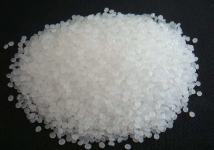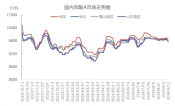read: 431 time:2024-11-01 17:46:08 from:化易天下
Acetone is a powerful solvent commonly used in various applications, including nail polish removal and cleaning. However, when it comes into contact with plastic, it can leave behind unsightly stains or even cause damage. If you're wondering how to get rid of acetone stain on plastic, this guide provides a detailed step-by-step process to help you restore your plastic items.
Before diving into the methods to remove acetone stains, it's important to understand how acetone interacts with plastic. Acetone is a solvent that can dissolve certain types of plastics, especially those made from polystyrene, polycarbonate, or acrylic. When acetone comes into contact with these materials, it can cause surface deformation, discoloration, or even complete dissolution. Therefore, handling acetone with care and knowing the type of plastic you're dealing with is crucial.
The first step in addressing how to get rid of acetone stain on plastic is to act quickly. If you accidentally spill acetone on a plastic surface, blot it immediately with a soft cloth or paper towel. Avoid rubbing, as this can spread the acetone and increase the affected area. Once you’ve absorbed as much acetone as possible, rinse the area with cold water to stop the solvent from further reacting with the plastic.
For minor acetone stains, a simple solution of mild soap and warm water may suffice. Gently scrub the affected area with a soft cloth or sponge soaked in soapy water. This method is most effective on sturdy plastics like polyethylene or polypropylene, which are more resistant to acetone. Rinse thoroughly with clean water and dry the area with a soft towel.
If soap and water don’t fully remove the stain, you can use a baking soda paste. Mix baking soda with a small amount of water to form a thick paste. Apply this paste to the stained area and let it sit for about 10-15 minutes. Then, gently scrub the area with a soft brush or cloth, and rinse with warm water. Baking soda is slightly abrasive, which can help lift stains without scratching the plastic.
In cases where the acetone stain persists, isopropyl alcohol can be a more effective alternative. Dab a small amount of isopropyl alcohol on a cotton ball or soft cloth and gently rub the stain. Isopropyl alcohol is less harsh than acetone and may help remove the residue without further damaging the plastic. Afterward, clean the area with soap and water to remove any alcohol residue.
After removing the stain, the plastic surface may appear dull or slightly rough. To restore its shine, you can polish the area using a plastic polish or a non-abrasive toothpaste. Apply a small amount of polish to a soft cloth and gently buff the area in a circular motion. This step can help smooth out any minor scratches and bring back the original luster of the plastic.
Knowing how to get rid of acetone stain on plastic is useful, but preventing future stains is even better. Always use acetone with caution around plastic surfaces. If you need to use acetone-based products, consider placing a protective layer, such as a cloth or paper towel, under the plastic item. Additionally, store acetone and similar solvents in a safe location, away from plastic containers or surfaces.
Acetone stains on plastic can be challenging to remove, but with the right approach, you can minimize damage and restore the appearance of your plastic items. Remember to act quickly, use appropriate cleaning agents, and take preventive measures to protect your plastic surfaces. By following these steps on how to get rid of acetone stain on plastic, you can ensure your plastic items remain in good condition for years to come.

Jincheng Petrochemical's 300000 ton polypropylene plant successfully trial production, 2024 polypropylene market analysis

The ABS market remains sluggish, what is the future direction?

Market differentiation of bisphenol A intensifies: prices rise in East China, while prices generally decline in other regions

The production method and process flow of silicone acrylic lotion, and what are the common raw materials